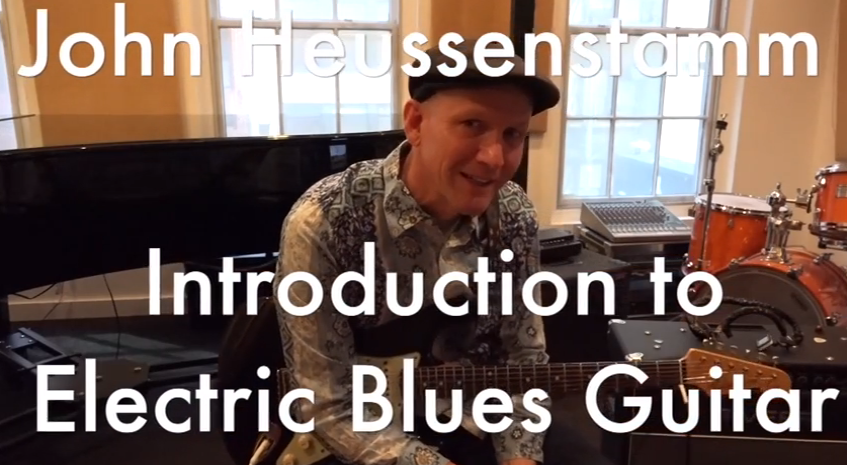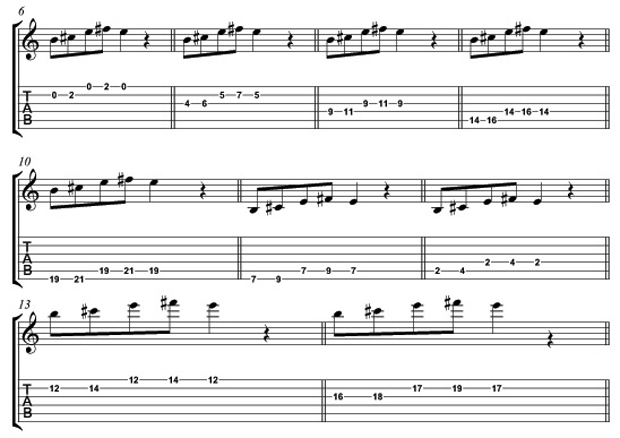LessonFace with John Heussenstamm: Introduction to Electric Blues Guitar — Video

This video and article offer introductory electric blues guitar concepts from guitarist and music educator John Heussenstamm. Author and co-author of multiple widely distributed books and videos from major music education publishers, and recipient of more than 10 million views on YouTube, Heussenstamm now can be reached for live online lessons via Lessonface.
As you can see in the brief video below, the addition of certain key techniques can add a great deal of expression to your playing. In this video, I demonstrate some simple introductory concepts using the first position of the A minor pentatonic scale.

I also discuss how 7th chords allow you to interact with the major and minor pentatonic scales, and I briefly demonstrate the difference between these sounds.


Of course, there's a lot more to learn after you digest this video. Before we can explore all the possibilities related to the electric blues style of guitar playing, we need to be familiar with concepts that relate to positions and keys.
Even if we feel we are getting good at the techniques of the blues, such as hammer-ons, pull-offs, sliding, bending, vibrato, etc., sooner or later we have to focus on the different keys and ways to correctly position ourselves. For me, the most important thing to know is where the root notes are in the key the song is in. I chose the key of E for this lesson because there are more E notes on the fretboard due to open E strings. The first line shows E notes up and down the neck.

Did you notice an E note can be played on every string? Did you know the same E note or unison note can be played on different strings? The first five notes were all in the same register. The other E notes are organized in octaves.
For me the best way to remember where these notes are and the significance of knowing that is learning how to play the same melody in different positions. The following nine riffs or melodies are all the same but in different positions and some in different octaves.

This knowledge really can boost your confidence. When you know where the root notes are in any key, you have the foundation points for improvisation and chord building. If you wanted to play in the key of F move everything up one fret. It's as easy as that.
The next challenge would be to take a riff or melody and move it into other positions like I did without examples or any help. Find the E note within the riff and move it to another E note and repeat or recreate the same melody. If you succeed at this with full comprehension of what you are doing you're on your way to becoming a competent player. For me this became really important when I got interested in jazz.

Blues riff between two octaves. There's more to come in the future.

If you found this information to be helpful and wish to continue studying along these lines, please follow our future articles with John Heussenstamm and look for Heussenstamm on Lessonface.
John Heussenstamm offers live online lessons and classes on Lessonface.com. Learn more.
Get The Pick Newsletter
All the latest guitar news, interviews, lessons, reviews, deals and more, direct to your inbox!
“There are so many sounds to be discovered when you get away from using a pick”: Jared James Nichols shows you how to add “snap, crackle and pop” to your playing with banjo rolls and string snaps
Don't let chord inversions bamboozle you. It's simply the case of shuffling the notes around







![Joe Bonamassa [left] wears a deep blue suit and polka-dotted shirt and plays his green refin Strat; the late Irish blues legend Rory Gallagher [right] screams and inflicts some punishment on his heavily worn number one Stratocaster.](https://cdn.mos.cms.futurecdn.net/cw28h7UBcTVfTLs7p7eiLe.jpg)


